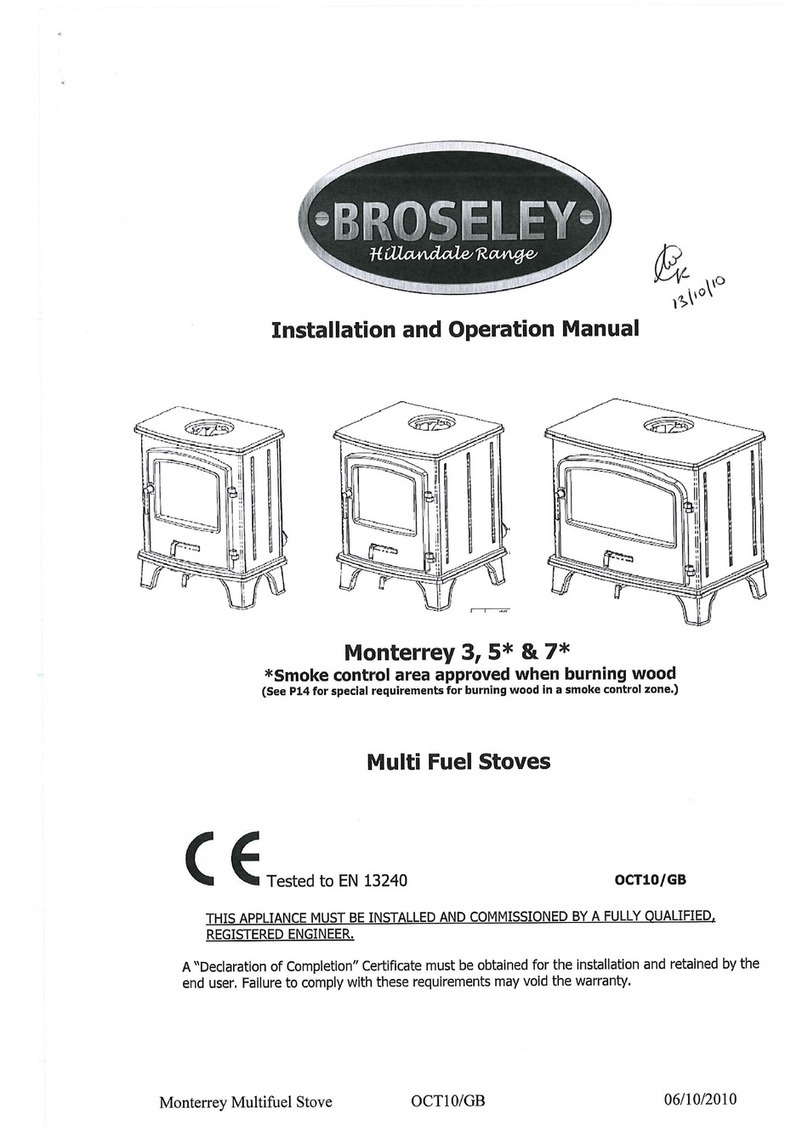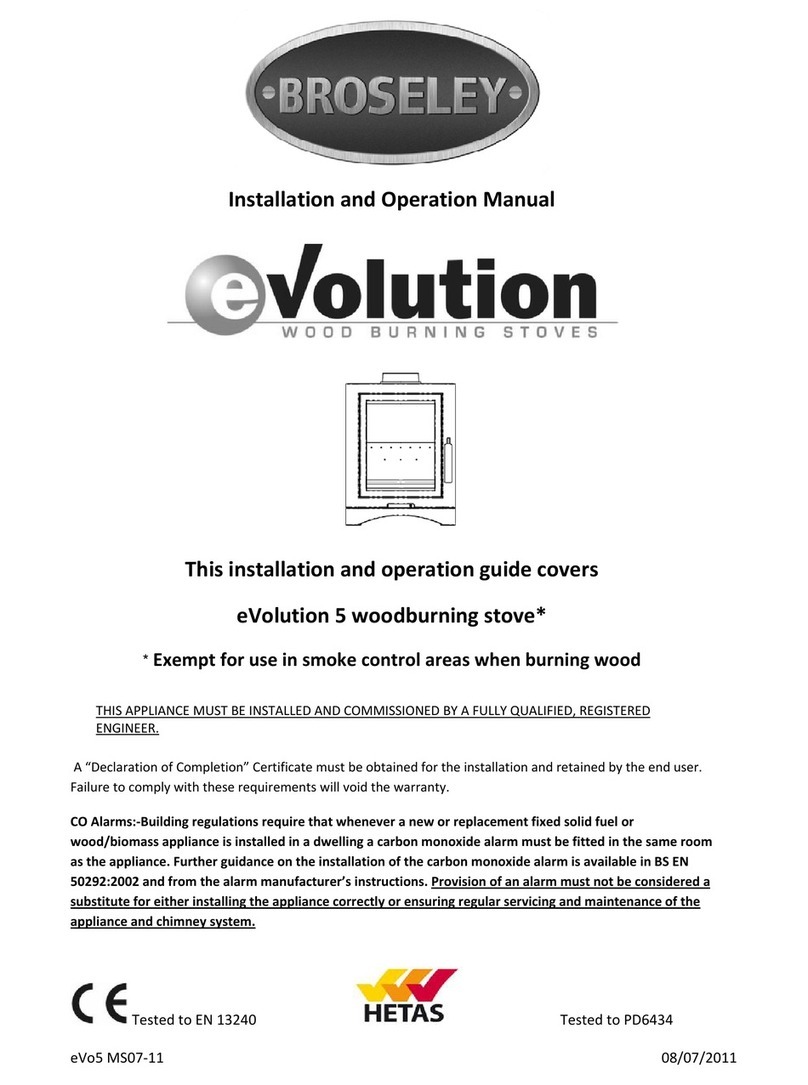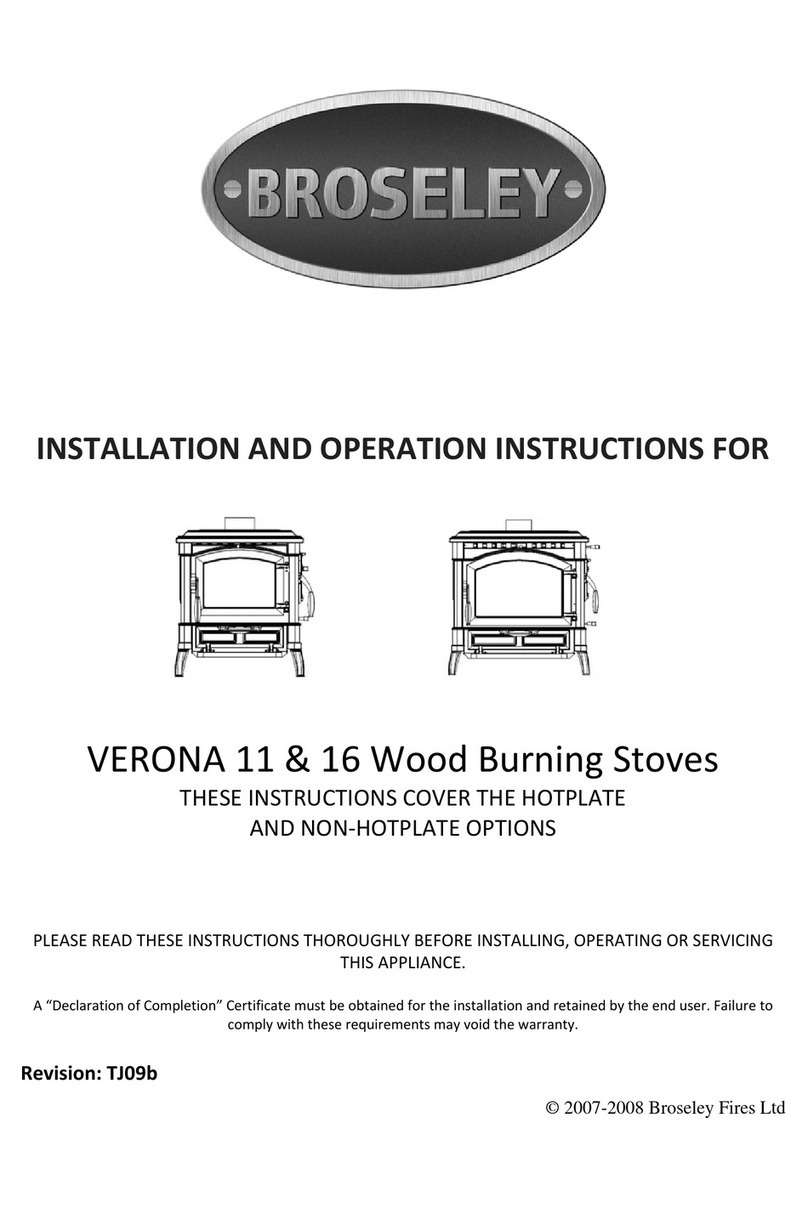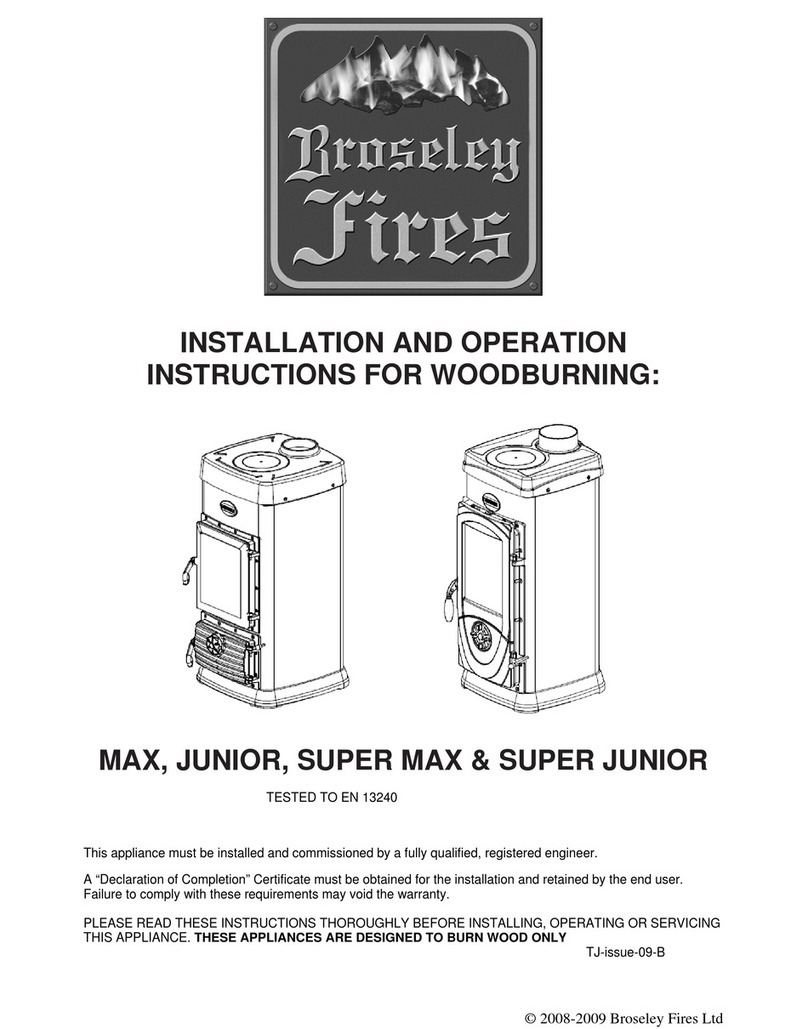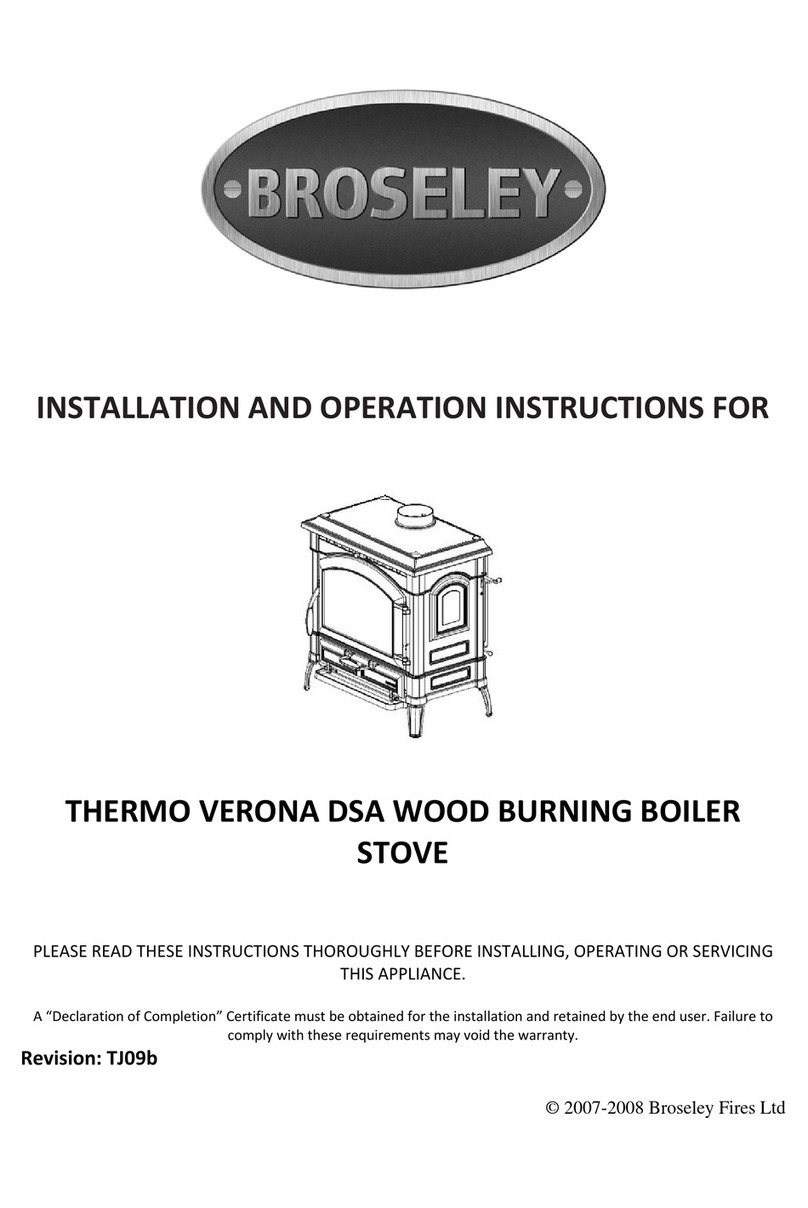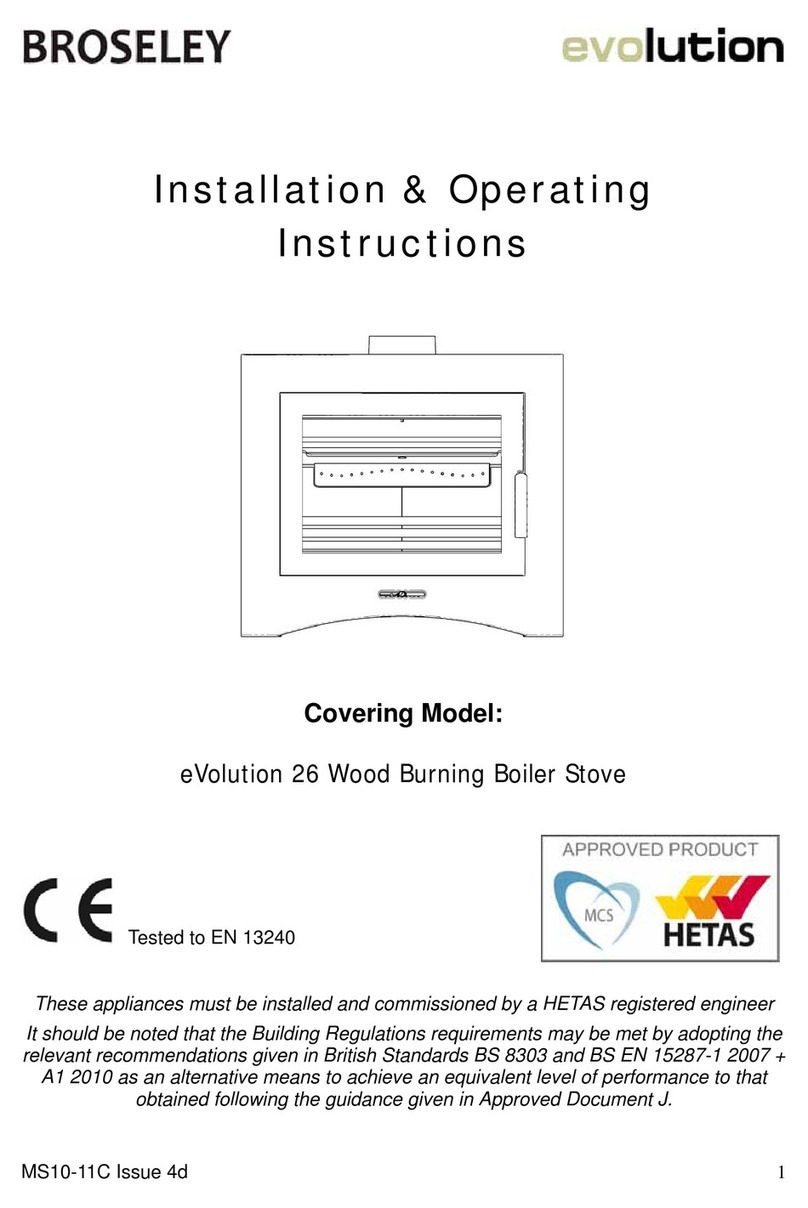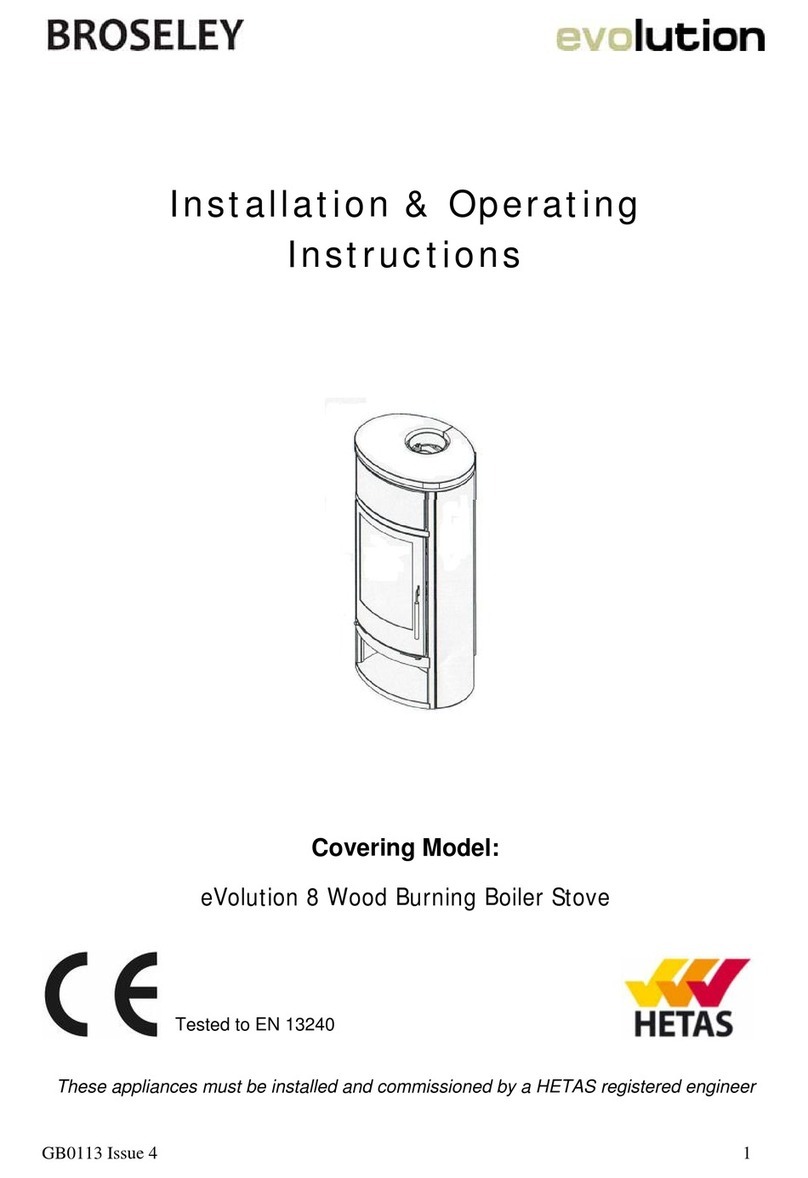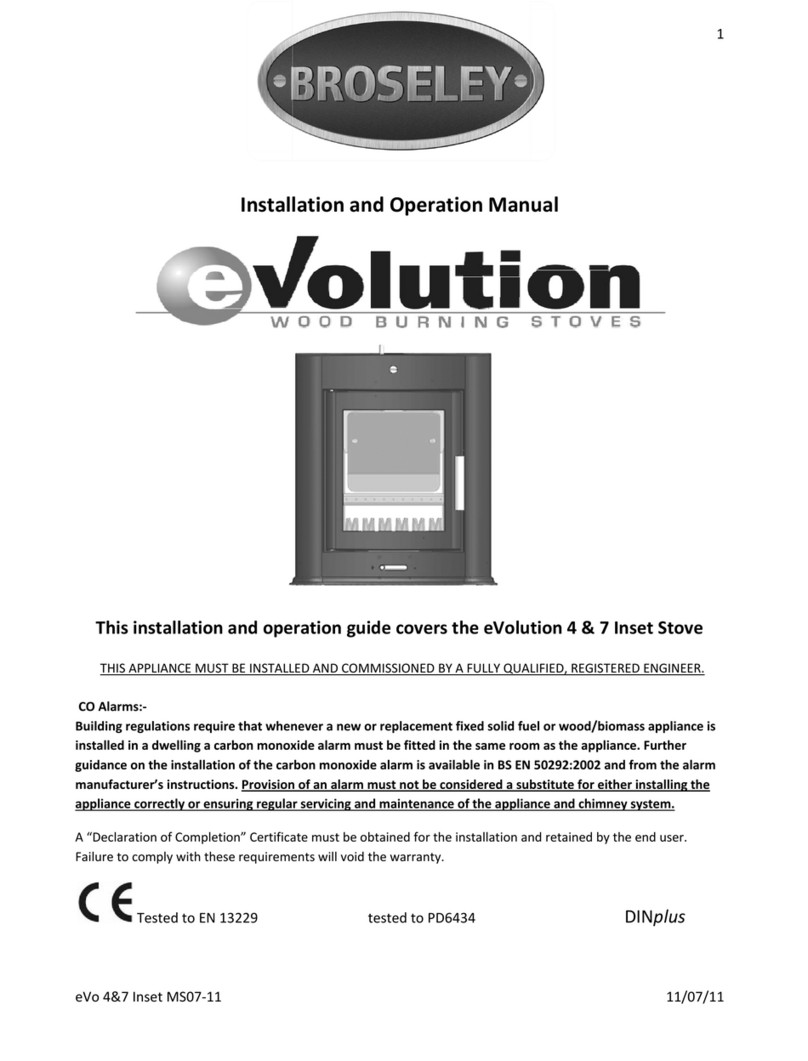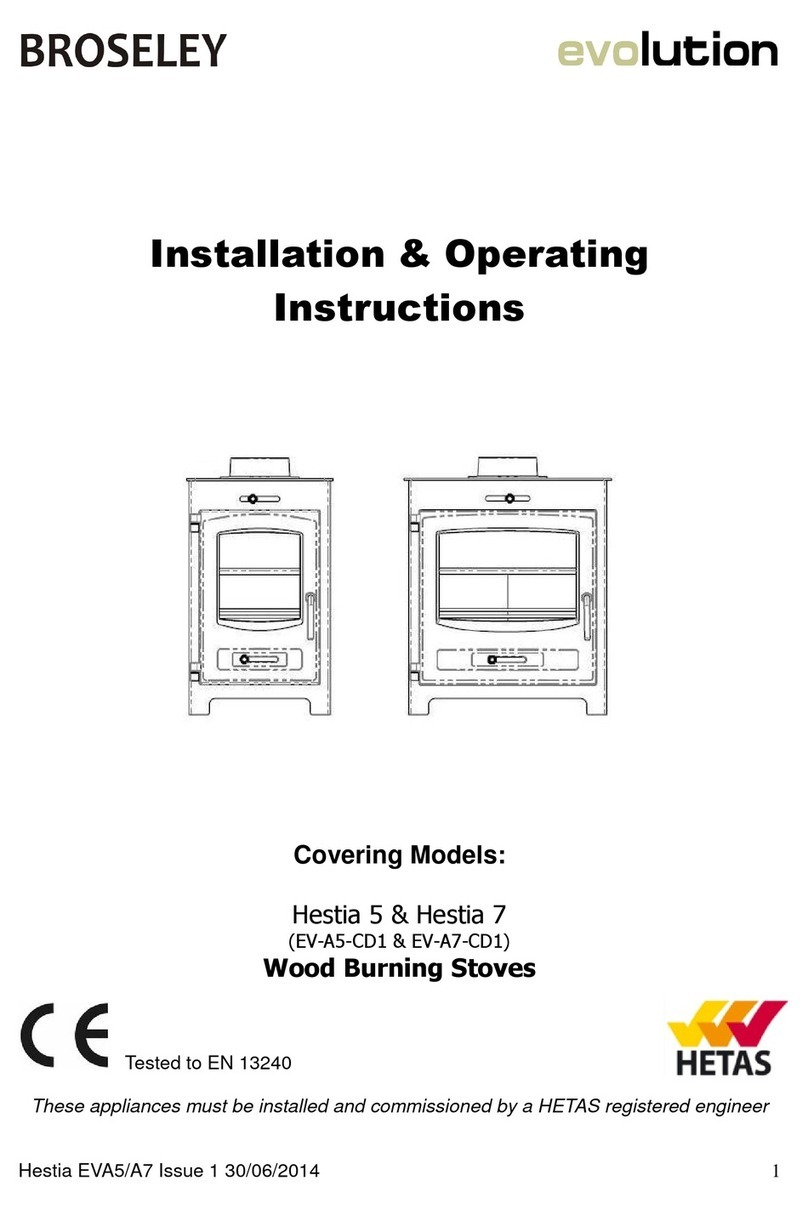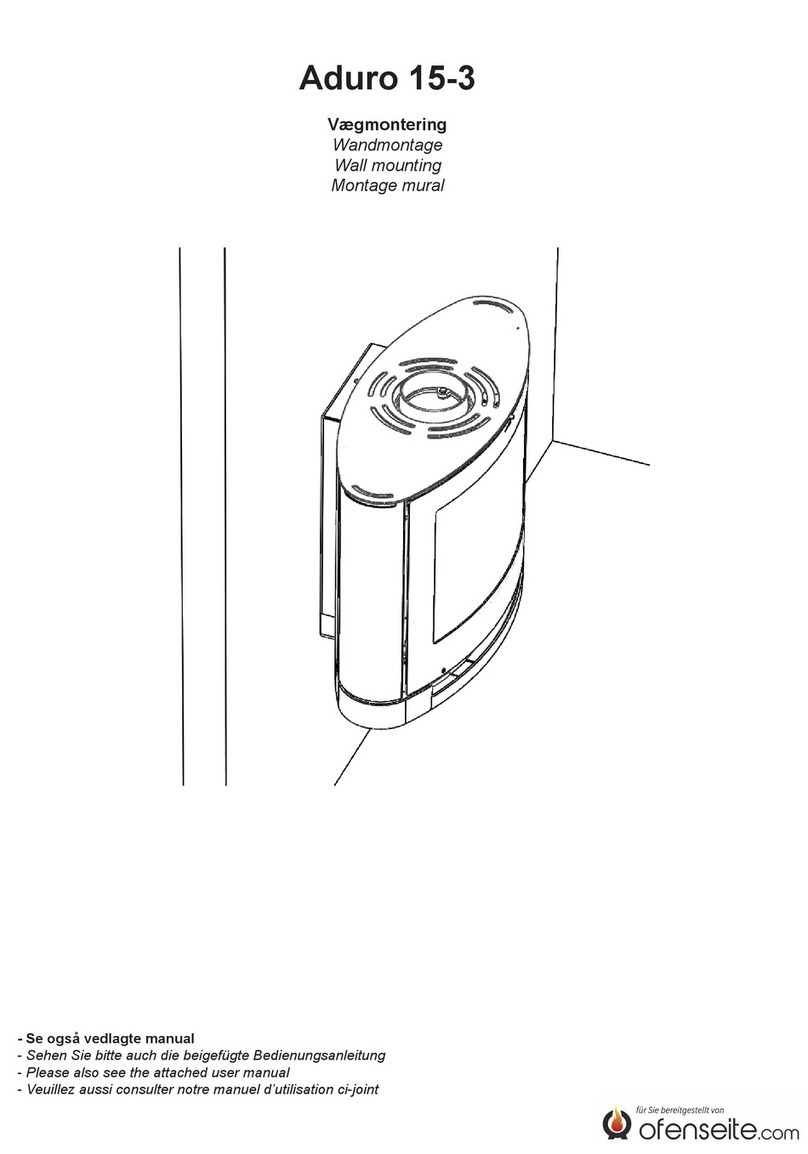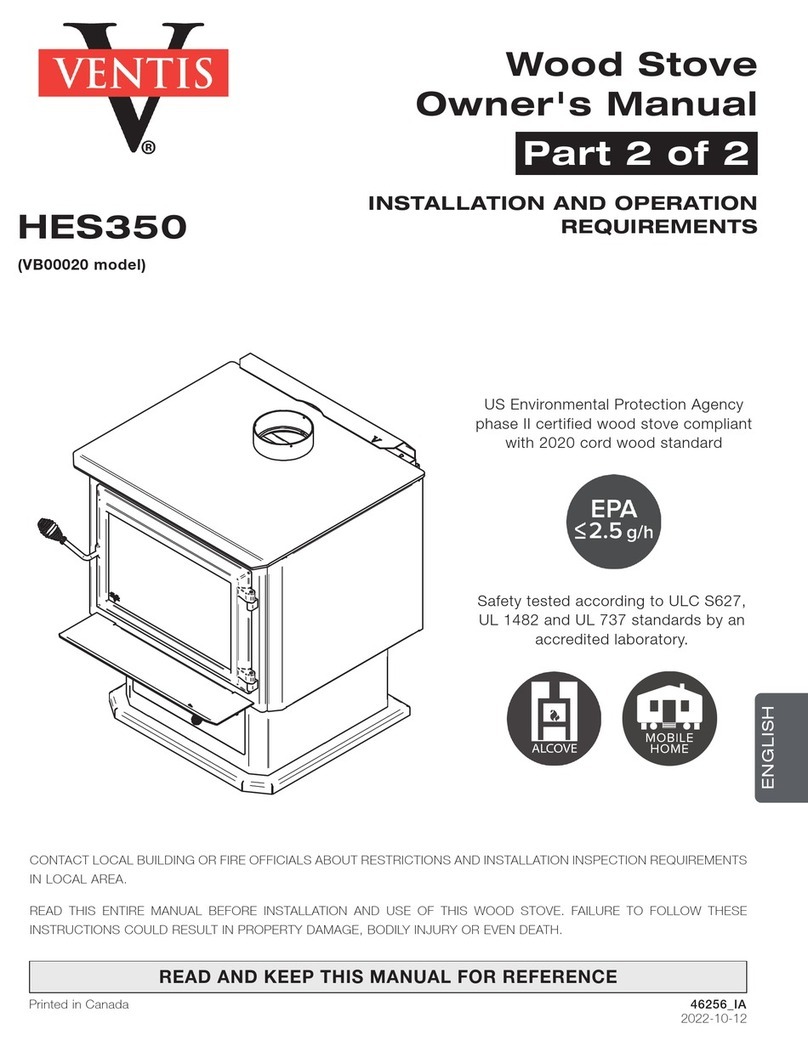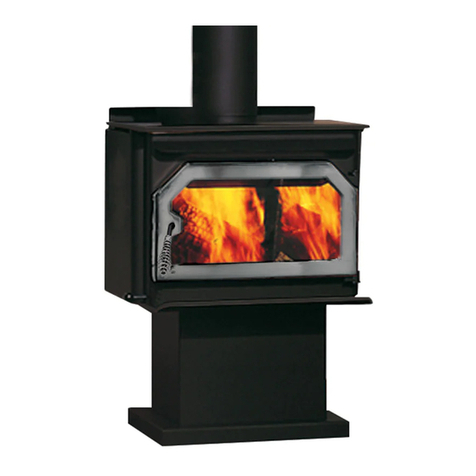
© 2008-2009 Broseley Fires Ltd
9 A BURNING WOOD
Hardwoods and softwoods both have the same calorific value (by nett weight), however softwoods will burn nearly
twice as fast as hardwoods..Most firewood you purchase will need to be stored in a well ventilated shelter to season
as it will contain a large amount of water. Depending on the moisture content, wood should be stored for 1 to 3
years before it is ready to burn. Wood used in this appliance must have a moisture content of less than 20%. Damp
or wet wood will quickly form tar deposits on all the internal areas where the combustible gasses travel, preventing
the efficient release of heat from the appliance. The inside of the chimney/flue will also be coated, there is a greater
risk of a chimney fire occurring.
When selecting wood, also take into consideration ease of splitting, ease of ignition and burning, how much smoke
it produces and its "coaling" qualities. "Coaling" refers to the ability of a species of wood to form a long- lasting bed
of hot coals when burned. Coaling qualities improve with wood of a higher density. Wood is not a long burning fuel
and so it is not always possible to keep the stove in overnight.
SEE BELOW (maintaining a wood fire)
10 INITIAL BURNING AND CURING OF THE APPLIANCE
The first time that the appliance is lit, there will be an odour given off. This is the components of the appliance
curing. It will be necessary to ventilate the room in which the appliance is sited.
The first firing needs to be done carefully to allow all of the components of the appliance to settle gradually. Never
try to run the appliance flat out the first time you light it. It will be necessary to keep the fire burning for longer
periods rather than short periods the first four to five times. This will be the best way to achieve correct settling of
the appliance. Do not burn the appliance at an accelerated rate, a steady burn is all that is required.
Gradually build up the output of the fire so that no sudden stresses are put on the components of the appliance.
During the first lightings, nothing should be leant against the stove and in particular on the varnished
surfaces. The varnished surfaces must not be touched during the initial curing process.
12 LIGHTING AND MAINTAINING A LOG FIRE
•Use scrunched up paper and dry kindling to start the fire. An alternative is to use fire lighters.
•Open the primary and secondary air controls to the fully open position. It will take a short time for the fire to
establish itself.
•When the fire is burning hot, add small pieces of very dry wood, preferably hardwood as these generate
better embers.
•Keep all the draft controls fully open till a bed of hot, glowing embers is established.
•Once you have some red hot burning embers, open the door and rake the embers evenly over the grate
before adding larger pieces of wood.
•We suggest that you do not fully load the appliance until you have become completely familiar with the
operation of ALL the controls.
•For best results, open the secondary air control and close the primary air control. The output of the
appliance can now be controlled using the secondary air control. .
•Do not open the loading door too quickly when reloading the appliance, as this can cause fumes to flash out
the door.
•A typical load will be 2 KG; this will maintain the output of this appliance
•Do not burn painted or varnished woods, MDF, oak bark or any wood with more than 20% humidity.
•It is not necessary to riddle the ash using the ‘riddling grate’ as wood burns best on a flat surface.
13 ASH REMOVAL – CLEANING OUT THE ASH
The removal of the ashes should be done when the appliance is cold.
Ashes must be removed periodically for the correct and efficient operation of your appliance. Don’t wait till the ash
pan's completely full. The frequency of this ash removal will depend on the type of fuel being burned, as. Softwoods
and hardwoods create differing amounts of ash. Keep in mind that cleaning your appliance boosts its efficiency, as
ash, soot or tar deposits will block the heat from coming out of the appliance. Excess ash in the pan will reduce the
efficiency of the appliance and will accelerate the wear on the grate and other internal components.. It may also
prevent the ash door from being shut correctly.
Take care when removing the ash, as small bits of hot embers can stay dormant for long periods when buried in
ashes. These will then flare up again when exposed to oxygen. Use a metal container to carry any ash.
For your own protection, a pair of heat proof gloves and a dust mask may be necessary.
14 WOOD ASH DISPOSAL
The best thing to do with your ashes is to put them in your garden. Wood ashes are high in potassium, calcium,
sodium, magnesium, and phosphorus.
Wood ash will make your soil more alkaline, so apply it appropriately for your soil.
If you have no garden, you can dispose of completely cold ash with your household trash.
Place it in a tightly closed bag to keep it contained.


